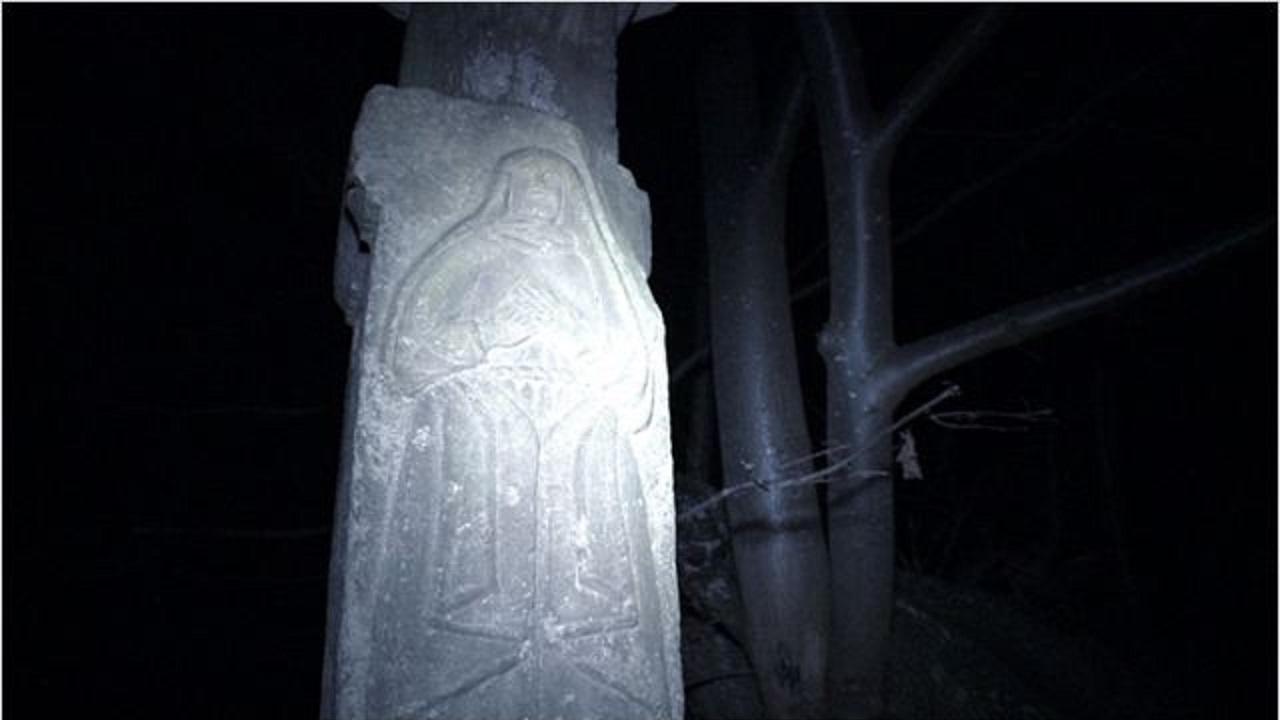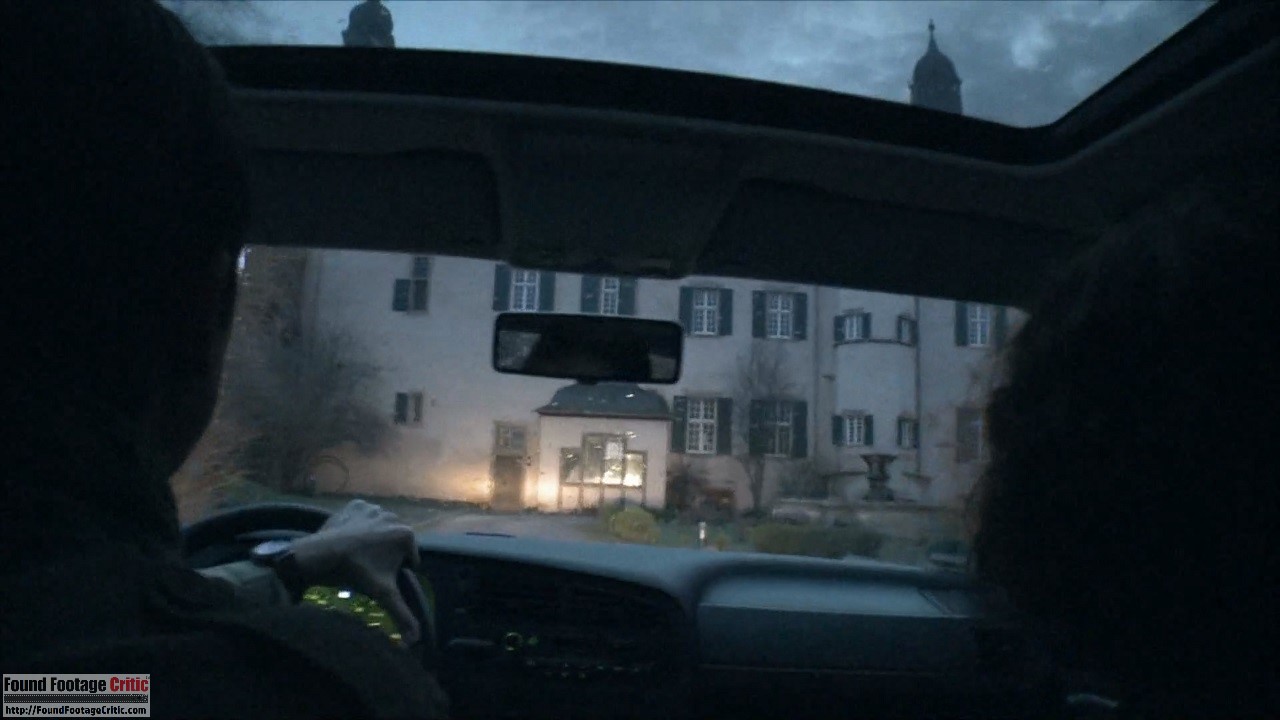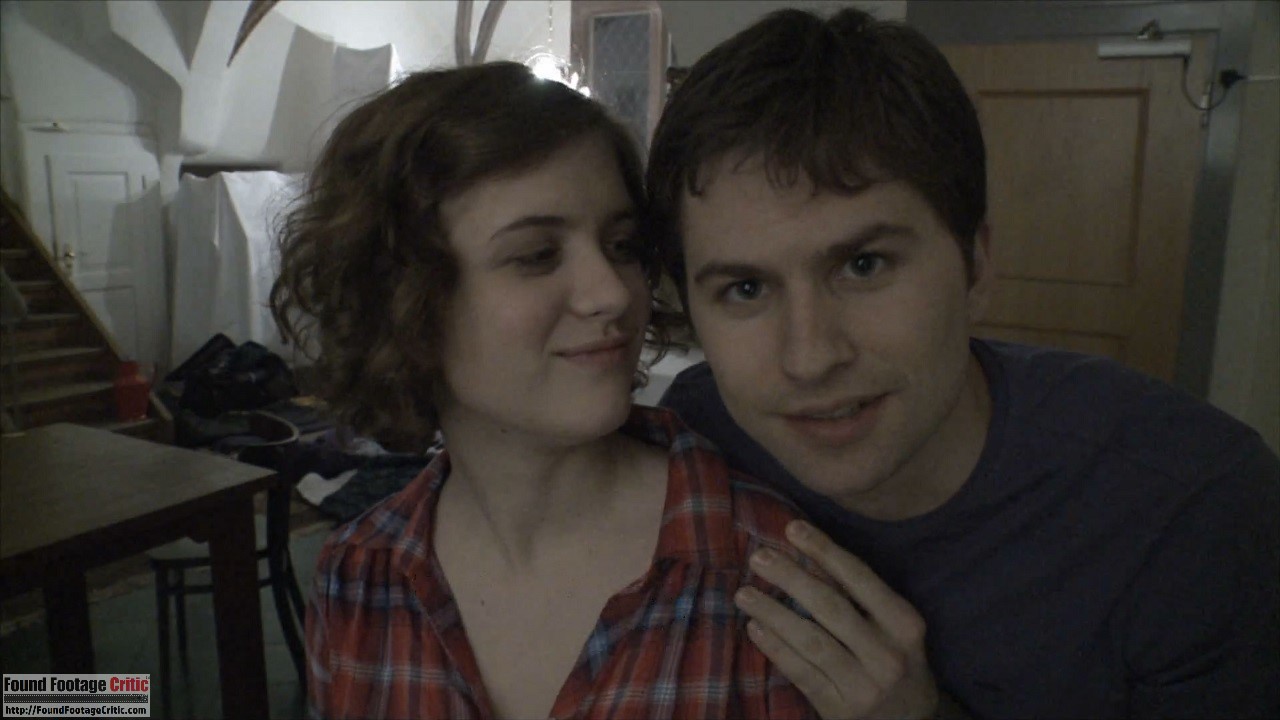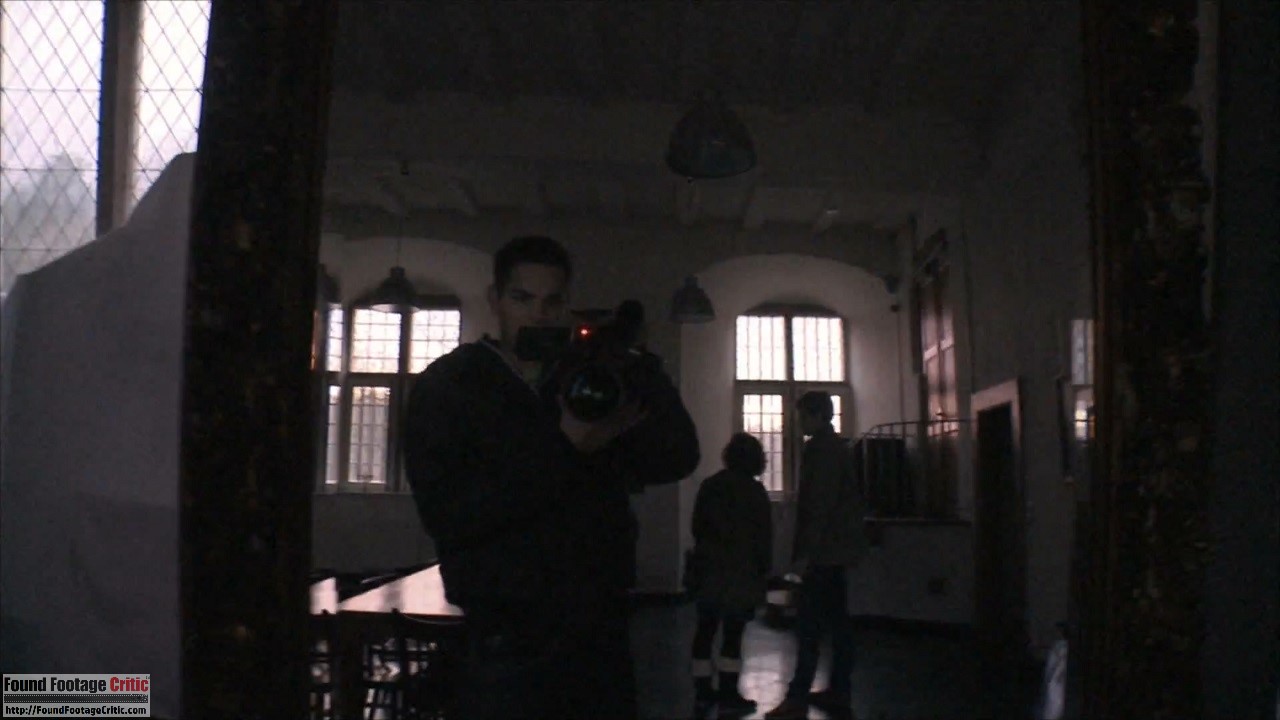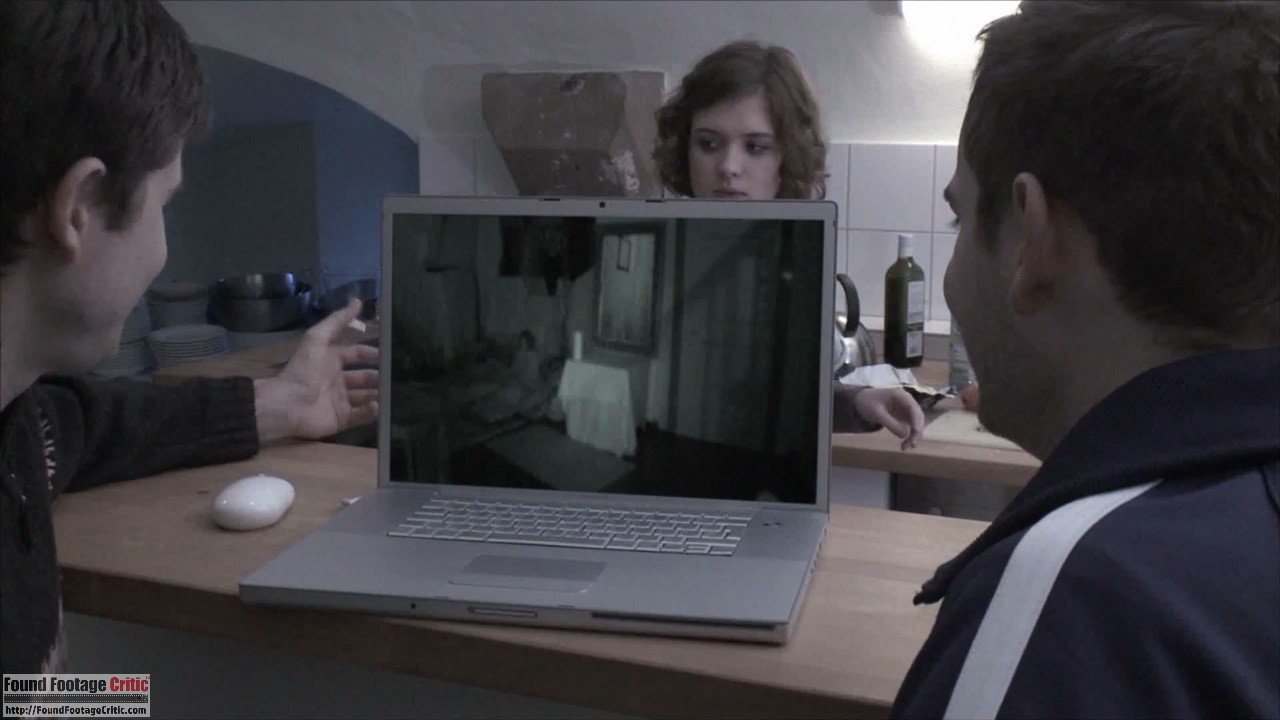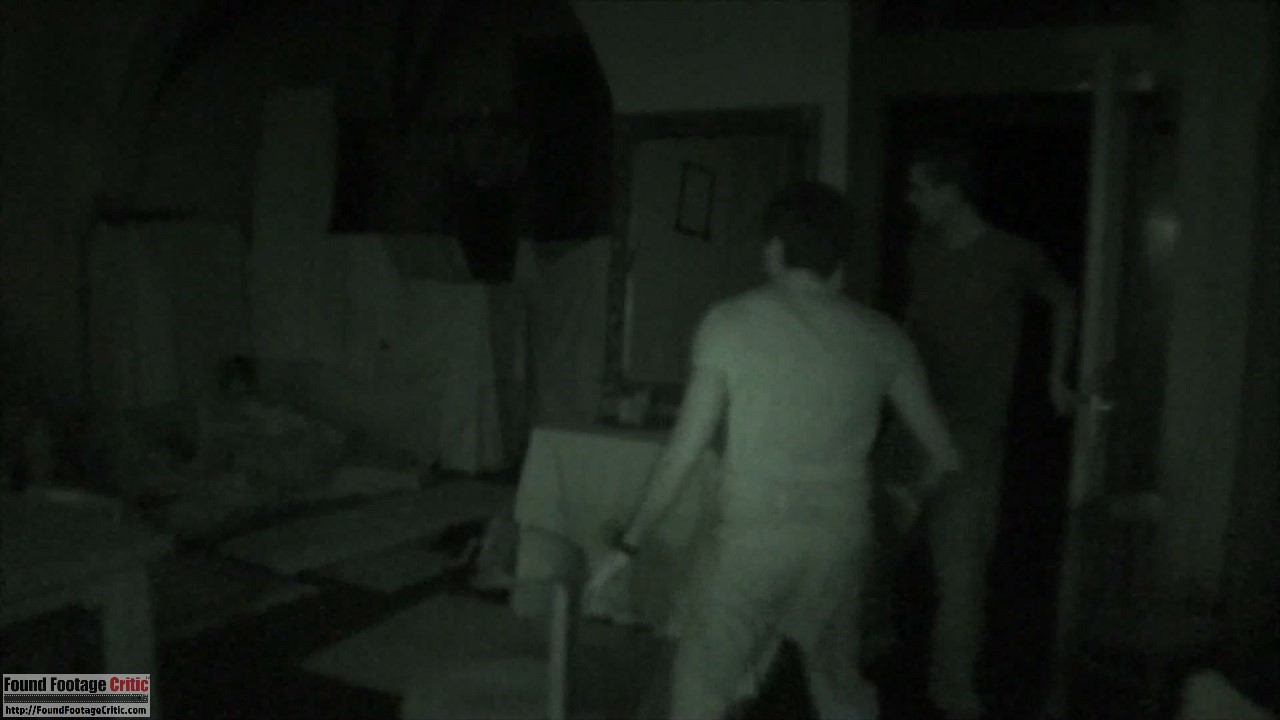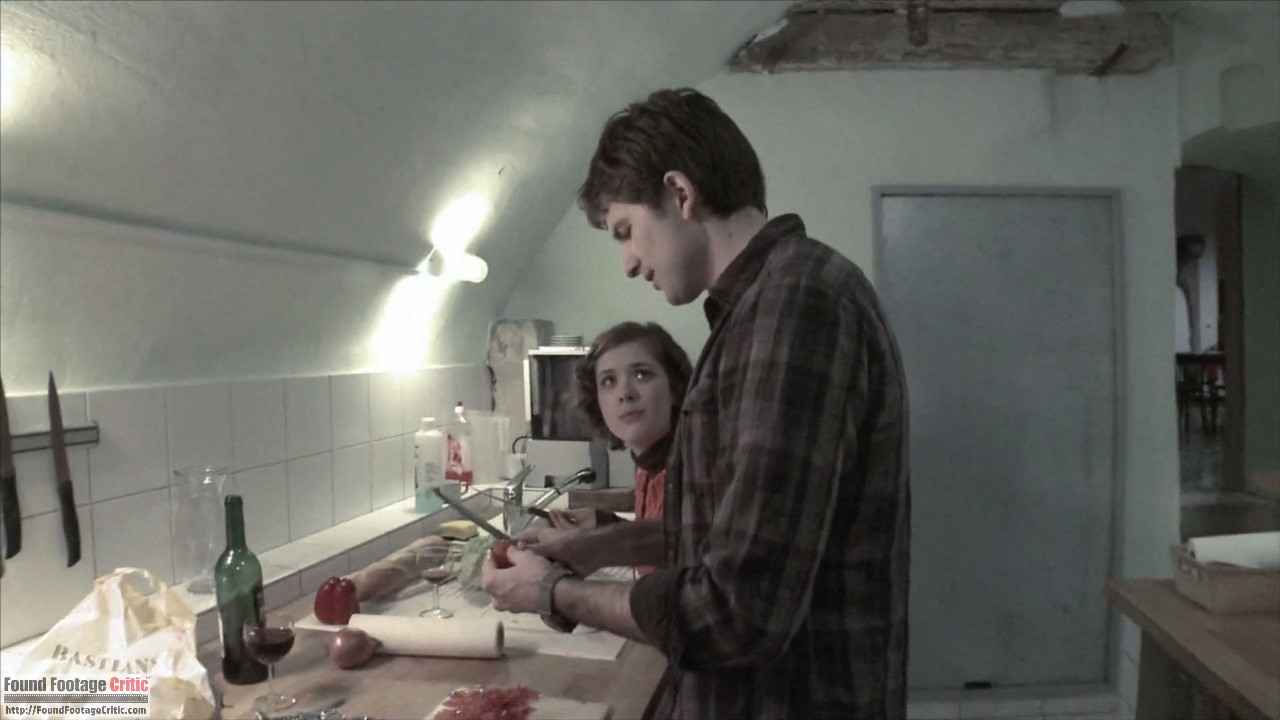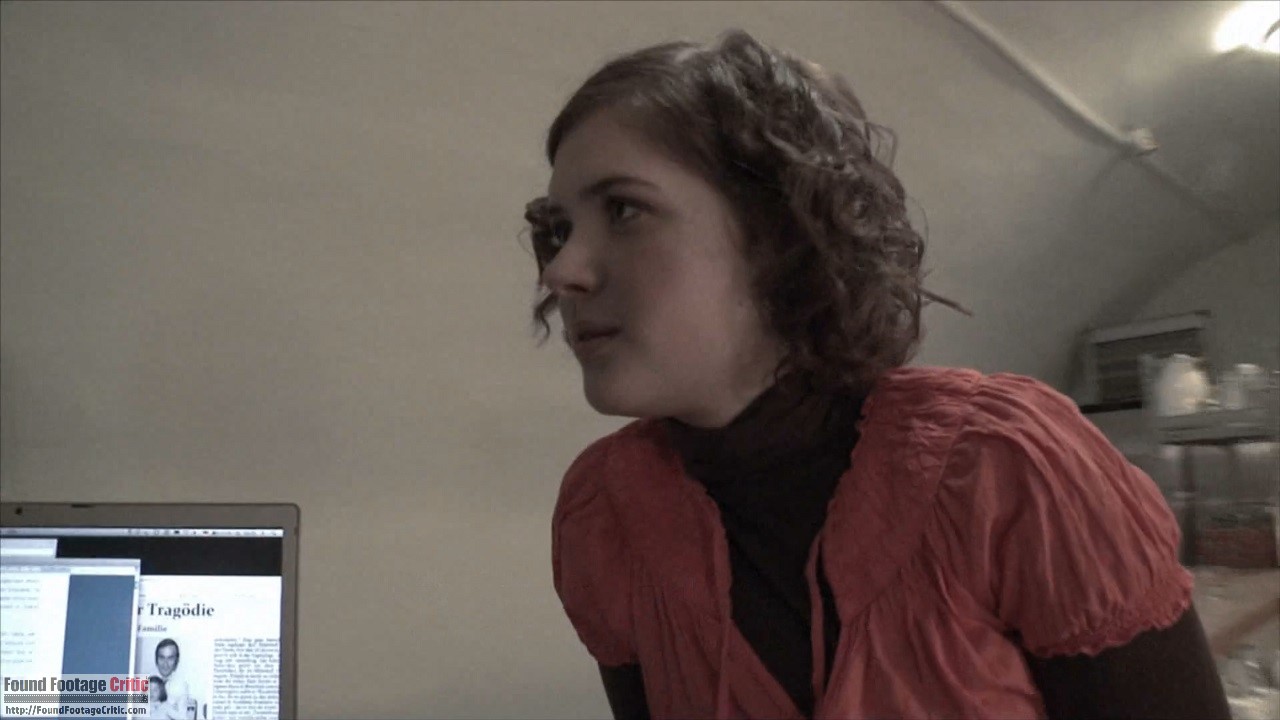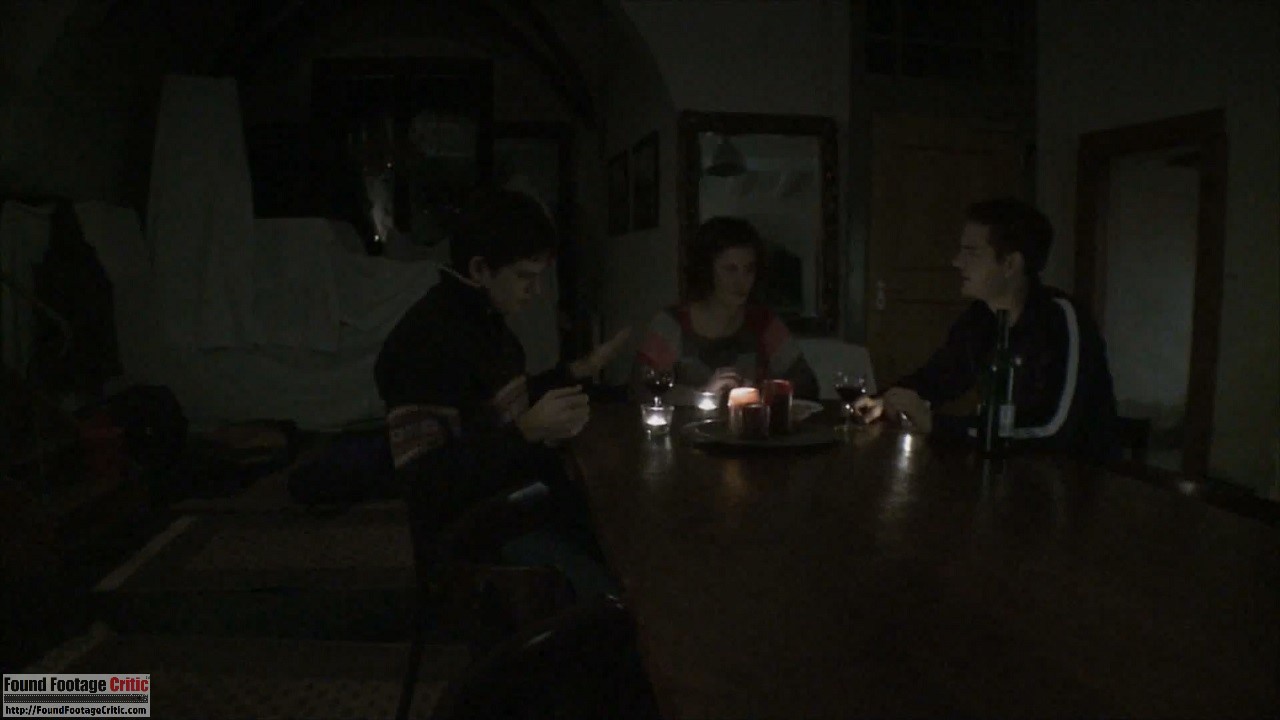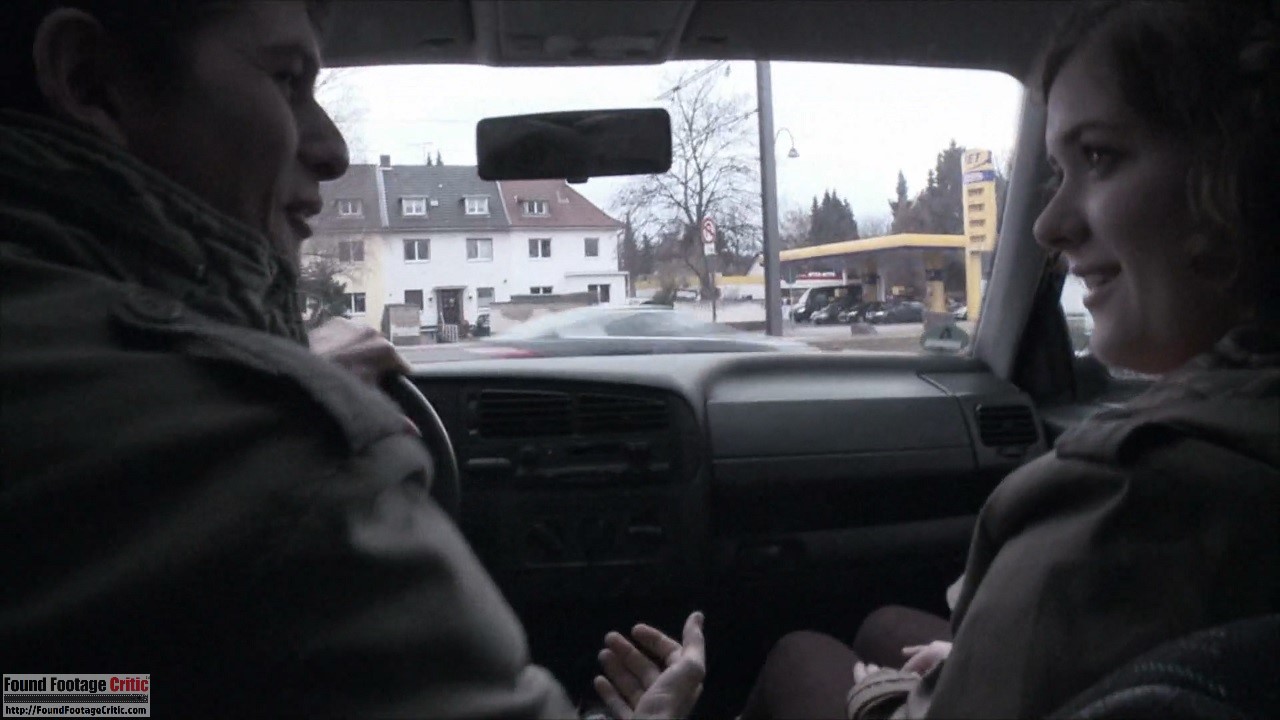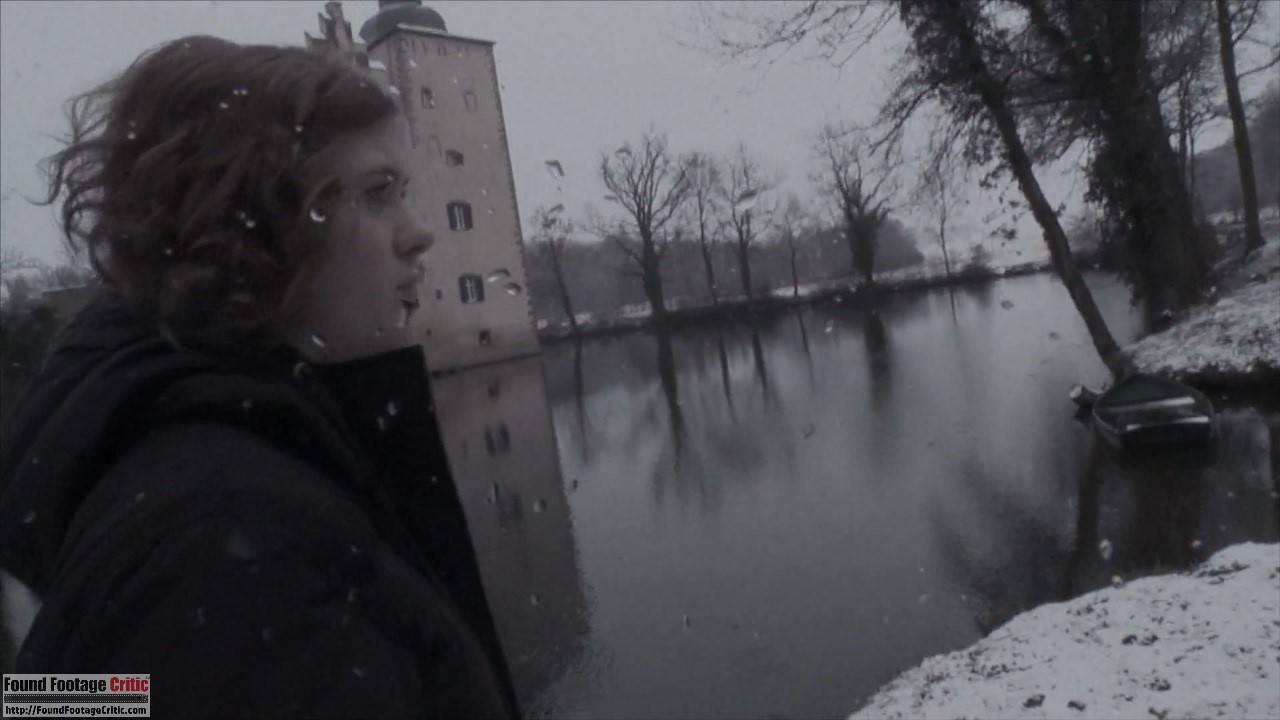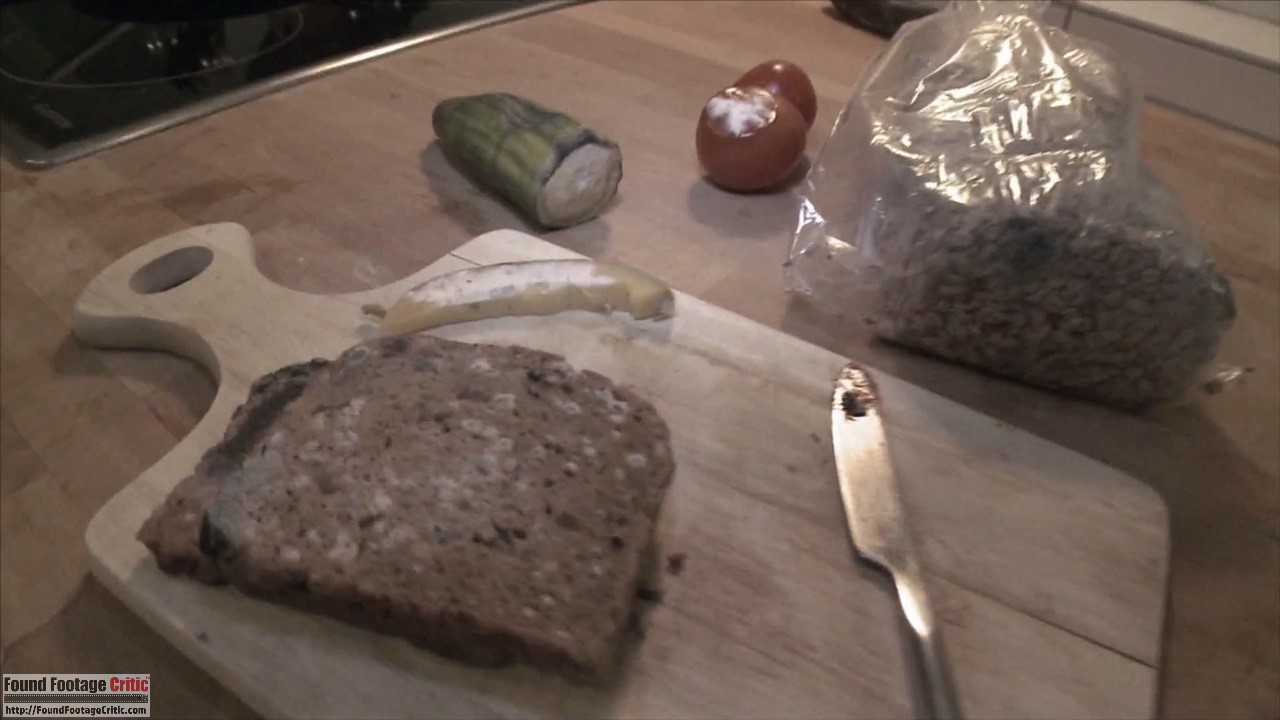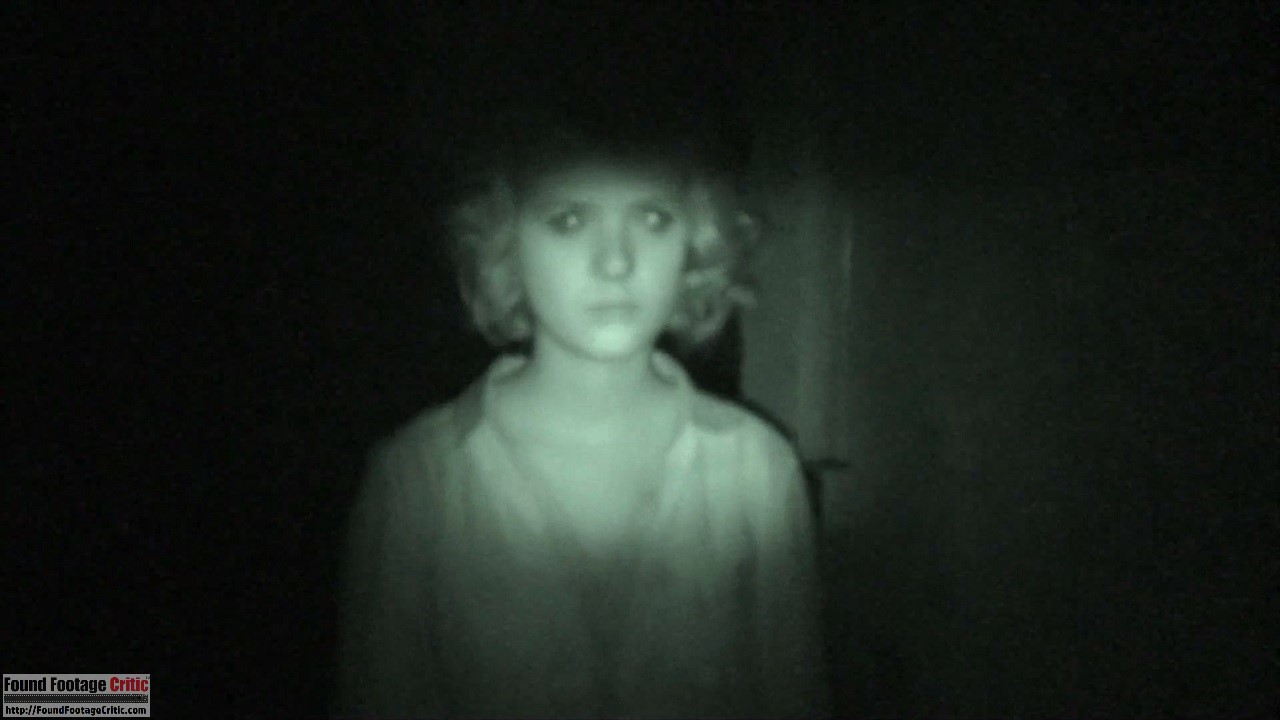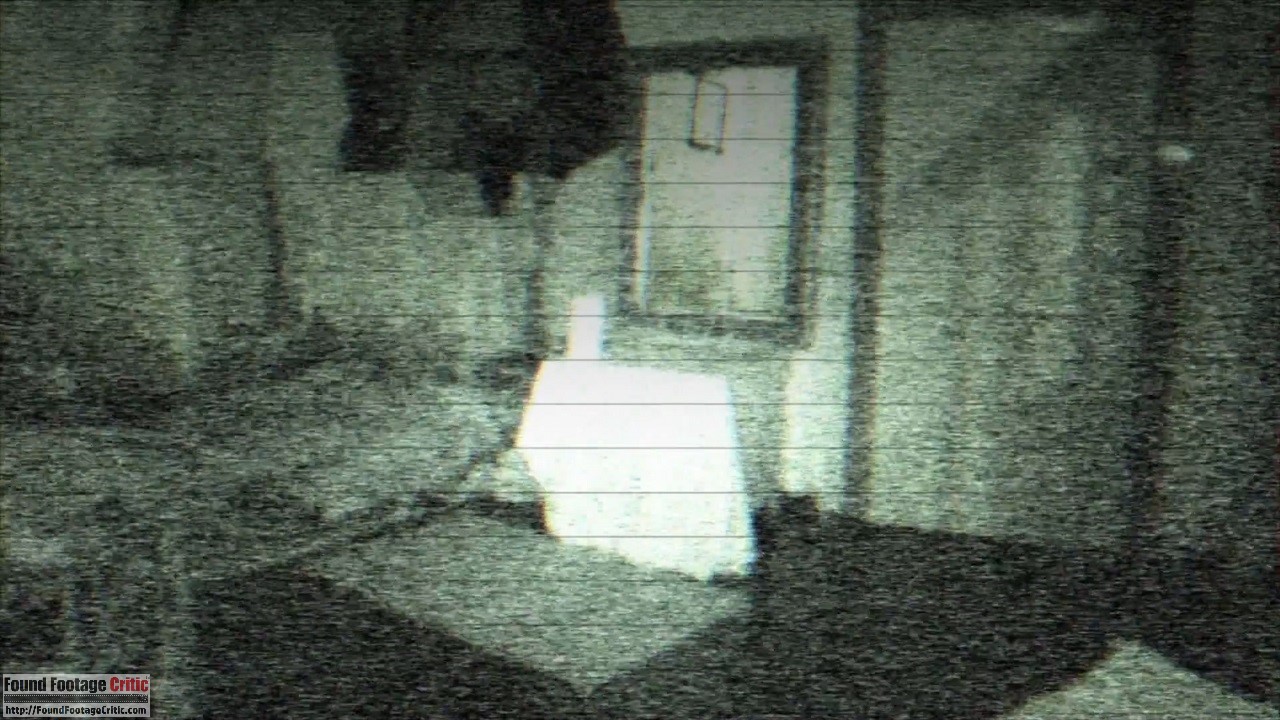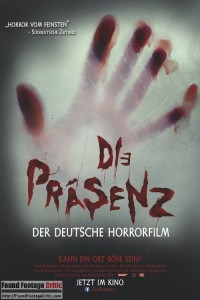 “Die Präsenz,” also known as “The Presence,” is a 2015 found footage horror film from Germany. The film is written and directed by Daniele Gieco. Die Präsenz follows a group of three friends who spend several days investigating an uninhabited and supposedly haunted medieval castle.
“Die Präsenz,” also known as “The Presence,” is a 2015 found footage horror film from Germany. The film is written and directed by Daniele Gieco. Die Präsenz follows a group of three friends who spend several days investigating an uninhabited and supposedly haunted medieval castle.
The film opens with an on-screen message indicating that the footage about to be presented is police crime scene evidence discovered at Hohnau Castle in Germany.
From here Die Präsenz transitions to Markus (Matthias Dietrich) and his girlfriend Rebecca (Liv Lisa Fries). Markus is driving Rebecca to a surprise weekend getaway but first stops at a local gas station to pick up his friend Lukas (Henning Nöhren).
Count Marian’s wife allegedly threw her children out a window before hanging herself.
The three friends make the long drive to their destination, an uninhabited medieval castle—Lukas knows the caretaker, who gave him the keys to the castle. Upon arrival, the trio look around the cavernous, run-down castle. Off the kitchen, they find a locked door, which is supposedly a dungeon where, as legend has it, Count Marian “bricked-in” his still alive wife and child. As the three friends continue to explore, they climb to the top of one of the towers, where Count Marian’s wife allegedly threw her children out a window before hanging herself.
Given the castle’s sordid history, Rebecca questions Markus’ decision to stay at Hahnau Castle as a vacation spot. Markus fesses up, telling Rebecca that he’s writing a paper about “haunted places and paranormal phenomena in popular culture” for an anthropology class and is using Hahnau Castle as the subject of his research.
The group films everything that transpires during their stay at Hahnau Castle. After their first evening, Markus and Lukas are elated to discover that they captured footage of what appears to be paranormal activity. The seemingly paranormal events continue to escalate the longer the three friends stay at the castle. As the paranormal activity escalates, so does Rebecca, Markus, and Lukas’ fear—will they live to share their story with the world?
Found Footage Cinematography
The cinematography used throughout Die Präsenz is very well done. All of the camerawork is filmed using one video camera with day and night vision. Most of the footage is captured through the strategic placement of the video camera in fixed locations where the characters spend the bulk of their time.
While on-the-go, the characters take turns filming depending on the specific circumstances of each scene. Director Daniele Grieco’s decision to maximize the use of fixed camera positions is a smart strategy, as this reduces the shakiness indicative of handheld filming without compromising the found footage conceit of the film.
Die Präsenz has a rich backstory, intriguing plot and relentless energy and momentum
The night vision scenes come across as authentic. Many micro-budget found footage films apply a green filter to simulate night vision—the lack of glowing eyes is a telltale sign of simulated night vision, a feat which is somewhat challenging to simulate on a low budget. Whether real or simulated, Die Präsenz executes night vision correctly.
Also of note is the concept of the evil spirit voyeuristically watching the characters through the lens of the video camera. During paranormal events, the entity effectively takes control of the video camera, manipulating the zoom and actually jostling the video camera to point at the characters. During these scenes, the video camera often displays video and audio artifacts and sometimes displays fleeting distorted images that are not in the video camera’s field of view.
Die Präsenz uses many of the cinematic techniques popularized in Paranormal Activity (2007). Similar to Paranormal Activity (2007), the characters in Die Präsenz film themselves reviewing the previous night’s footage on a laptop. Additionally, Die Präsenz (like many other paranormal found footage films) borrows the low-level hum that presents itself immediately preceding a paranormal event. Finally, the characters film themselves sleeping each night, a technique used throughout the Paranormal Activity series.
While imitation is the sincerest form of flattery, the replication of all of these cinematic techniques (in additional to other plot elements described later) is likely to invoke comparisons to Paranormal Activity (2007) while watching Die Präsenz. Nonetheless, as a standalone film, Die Präsenz has a rich backstory, intriguing plot, and relentless energy and momentum.
Where Die Präsenz differs from Paranormal Activity (2007) is in the intensity and presentation of the paranormal events. Where Paranormal Activity (2007) relies on nuanced traces of something off-worldly taking place, Die Präsenz aggressively presents paranormal events as an onslaught, if not outright attack, on the senses. The combination of pounding, moaning, and growling, coupled with the evil entity’s voyeuristic control of the video camera is both disturbing and eerily unsettling.
Unique to Die Präsenz is the strategic use of scenes played back at faster than normal speeds, adding to the disturbing visual and audio qualities of the film.
Filming Reason
The filming reasons used in Die Präsenz are exceptional. Early in the film, Lukas says that he’s documenting his vacation, proclaiming that “It’s the latest thing.” This filming reason explains why Lukas films much of the car ride to the castle and the incidental filming of the castle once they arrive.
A second filming reason is introduced when Markus tells Rebecca that he is researching the veracity of the stories claiming that the castle is haunted. Markus and Lukas meticulously film everything during their stay at the castle to capture proof of paranormal activity. In many cases, the video camera is also used as a light source via the camera lamp and night vision.
Found Footage Purity
The found footage purity in Die Präsenz is also very well done. As a whole, the film presents as recovered footage that could almost pass as actual found footage.
While the scenes filmed in faster than normal speed are very creepy and raise the scare-factor of Die Präsenz, these scenes detract somewhat from the found footage conceit of the film as something that would actually happen (even under the guise of paranormal activity). This determination especially holds true during the climactic final four minutes of the film. Also of note is a scene where the video camera low battery icon is recorded to video. While the battery icon appears on the on-screen video camera display, this element does not record to video.
Despite these two transgressions, the found footage purity across Die Präsenz is strong.
Acting
Liv Lisa Fries performs wonderfully as Rebecca, an unwitting participant in Markus and Lukas’ plan to research Hohnau Castle. Rebecca feels uneasy about staying at the castle from the first moment they arrive—a sixth sense kicks in telling her that something is not quite right and everyone should leave immediately. She begrudgingly stays at the behest of her boyfriend and Lukas, but is clearly not happy about the prospect of spending multiple days (and nights) at the castle.
Matthias Detrich does a great job playing Markus, who is eager to capture evidence of the alleged paranormal activity at Hohnau Castle, while at the same time doing his best to pacify his girlfriend Rebecca, who has no interest in participating in his research.
Henning Nöhren performs admirably as Lukas, the somewhat immature friend to Markus. Lukas spends a good amount getting on Rebecca’s nerves through his antics. Since Markus and Rebecca are a couple, Lukas is the odd-man out, often finding himself bored.
Plot
The aggressive use of prominent and jarring sound effects creates a real sense of unease and danger that attacks the senses
Die Präsenz has an interesting plot, and more importantly, has an energy level and momentum that exceeds most paranormal-based found footage films. The aggressive use of prominent and jarring sound effects creates a real sense of unease and danger that attacks the senses.
Director Daniele Grieco effectively includes several fake jump scares throughout the film—unexpected situations that are not necessarily due to paranormal events but are shocking nonetheless.
As mentioned earlier, Die Präsenz’s use of many of the tropes in Paranormal Activity (2007) detracts (ever so slightly) from the film. In addition to the cinematic elements mentioned earlier, Die Präsenz also borrows several plot elements from Paranormal Activity (2007). These plot elements include the female lead being placed in a trance by the evil entity (and sleeping through the day) and having the male lead obsessed with capturing proof of paranormal activity. Perhaps if less of these tropes were utilized or if they were applied more subtly, the comparison to Paranormal Activity (2007) would not be as prevalent.
The film includes a good amount of foreshadowing. Early in the film, Markus’ research reveals there are four stages to paranormal phenomena: Stage 1: the feeling of being watched and presence of strange noises; Stage 2: a drop in temperature and doors opening by themselves; Stage 3: lights and appliances turning on and off; and Stage 4: fires starting spontaneously and dangerous objects flying at people. These four incremental stages are progressively played out in the film during the group’s stay at the castle.The film also present and interesting and rich backstory explaining the genesis of the paranormal events.

